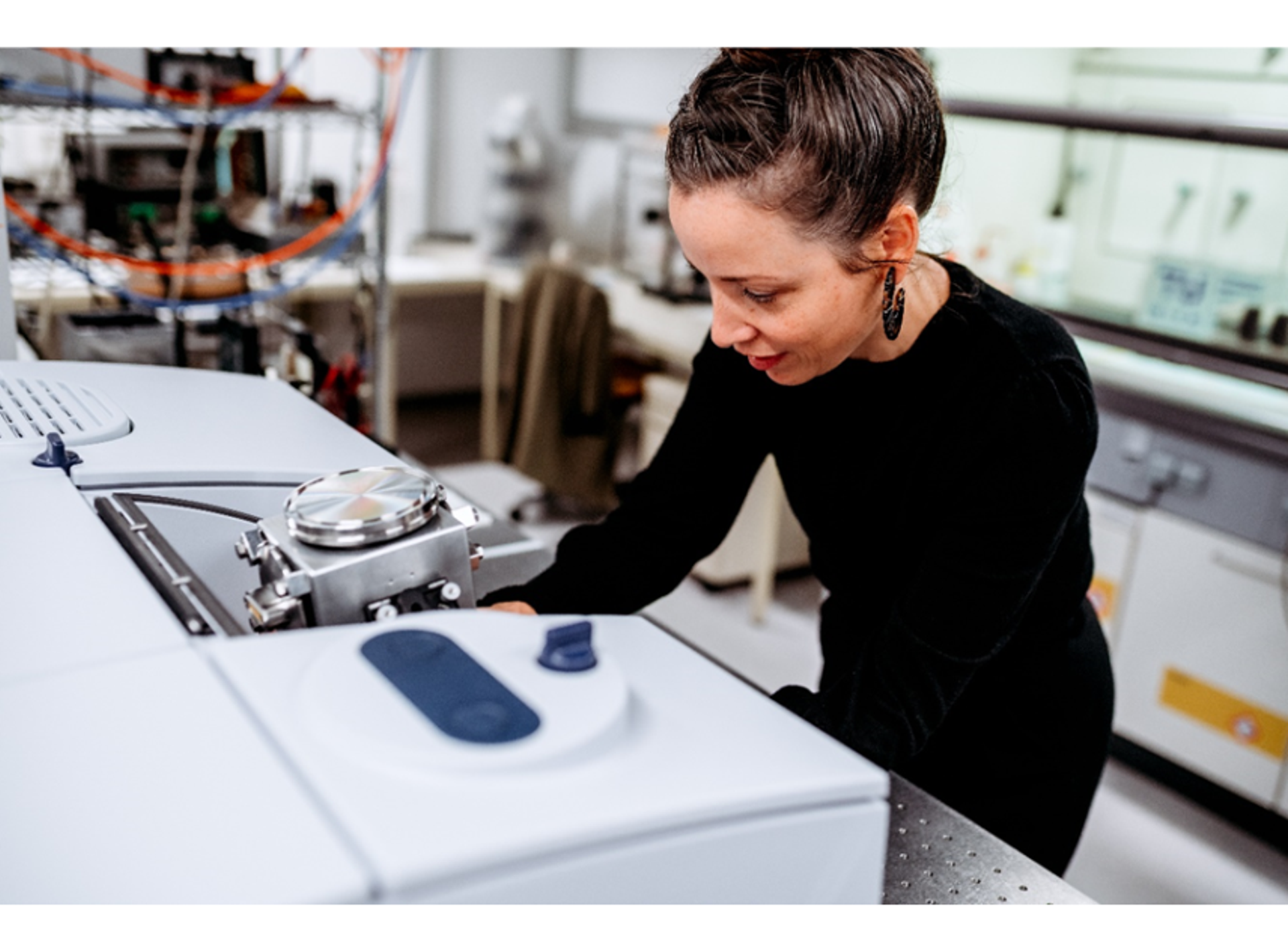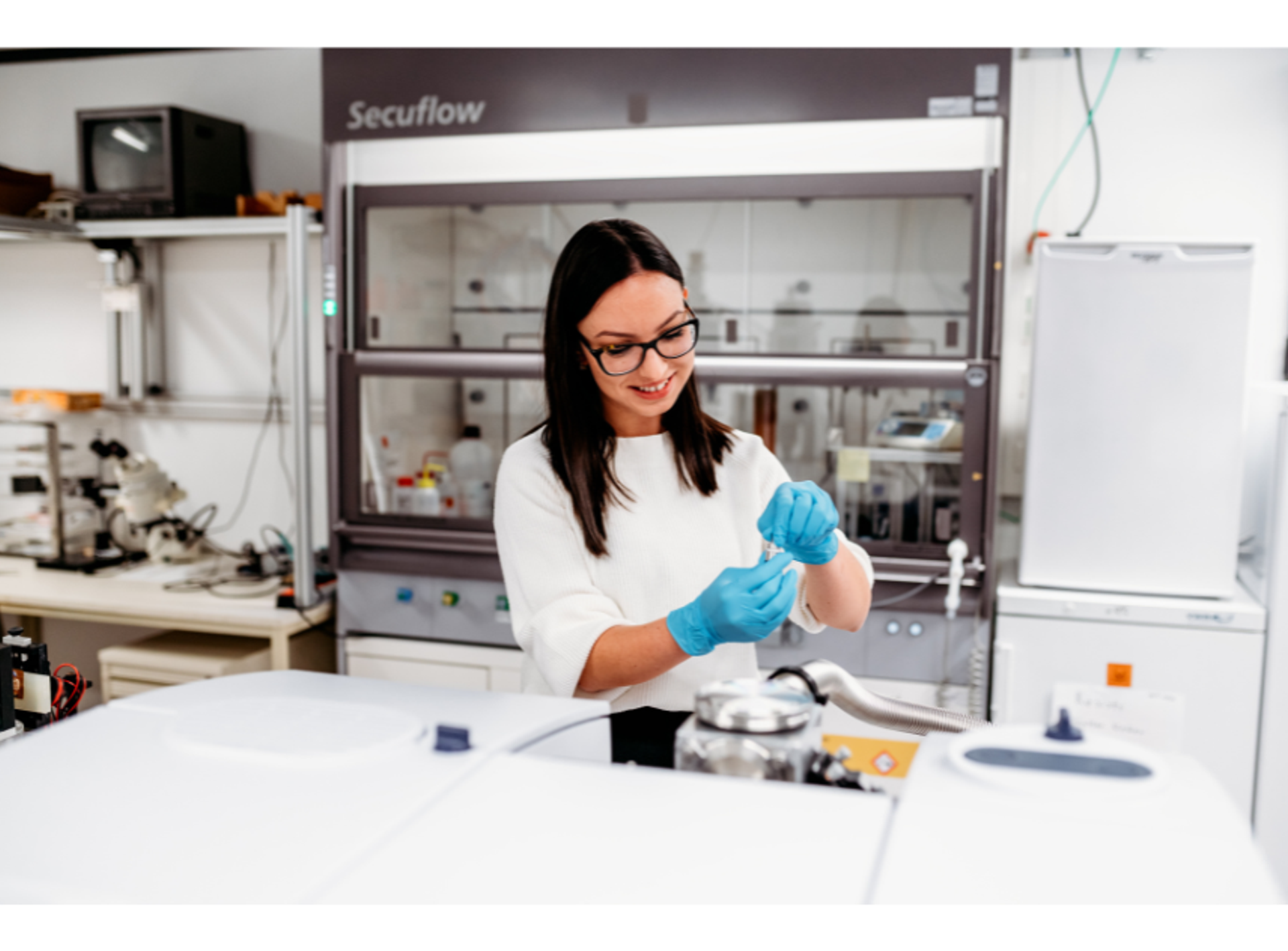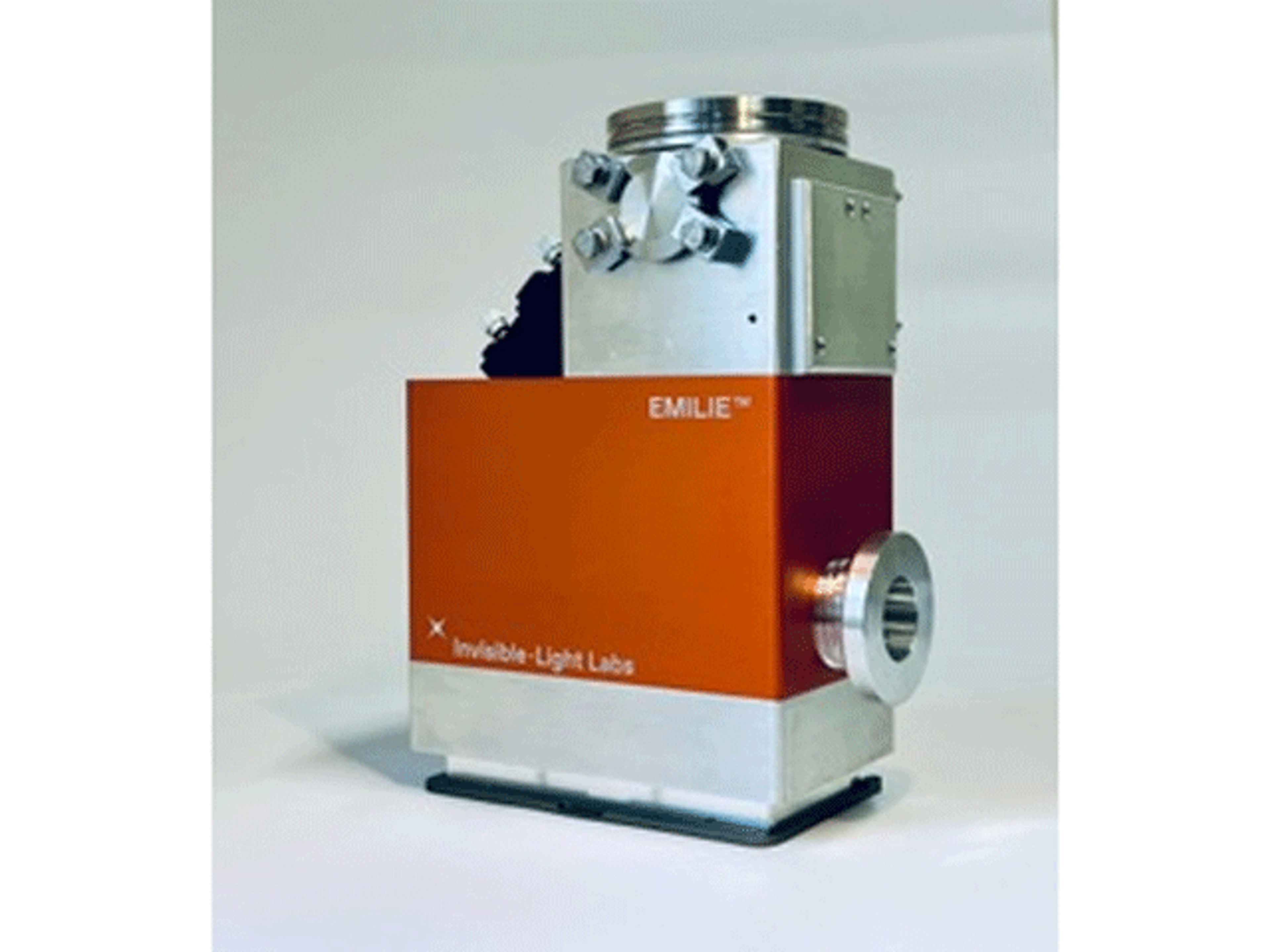The next frontier in nanoelectromechanical photothermal infrared spectroscopy
Discover how Invisible-Light Labs is redefining nanoscale analysis with EMILIE, boosting sensitivity and cutting sampling times for breakthroughs in environmental monitoring, nanotechnology, and beyond
1 Jan 2025
(left) Prof. Dr. Silvan Schmid, Co-Founder and (right) Dr. Josiane P. Lafleur, Co-Founder and CEO of Invisible-Light Labs. @Romana Maalouf photography
Nanoelectromechanical photothermal Fourier transform infrared spectroscopy (NEMS-FTIR) is a highly specialized technique used to characterize nanoscale materials. Integrating various scientific disciplines, NEMS-FTIR is unlocking exciting new possibilities for future research. This advancement is now being realized with EMILIE, a groundbreaking nanoelectromechanical infrared analyzer from Invisible-Light Labs.
We spoke with Dr. Josiane P. Lafleur and Prof. Dr. Silvan Schmid, Co-Founders of Invisible-Light Labs, to explore their innovative technology, EMILIE.
Cutting-edge NEMS-FTIR technology
Dr. Lafleur, Prof. Schmid, and their team have dedicated significant effort to developing EMILIE, an innovative nanomechanical infrared analyzer designed for bulk chemical characterization of nanoparticles, thin film analysis, and the chemical characterization of non-volatile and semi-volatile analytes.

Nanoelectromechanical photothermal Fourier transform infrared spectroscopy (NEMS-FTIR) is a technique that uses nanoscale mechanical resonators to characterize materials through infrared light. @Romana Maalouf photography
Lafleur says, “Infrared is a technique that's really widely used. Unfortunately, when people think about infrared, they often don't think of high sensitivity. In my previous research work, I consistently struggled to find detectors sensitive enough to characterize very small samples.” She continues, “This is the first NEMS detector for FTIR spectrometers on the market, and it’s highly sensitive, setting it apart from existing technologies."
Explaining how the technology works, Schmid says, “EMILIE is indeed a very unique technique. We measure infrared light thermally using a nanomechanical resonator. This resonator functions as a temperature sensor by detecting heating through its eigenfrequencies. Its exceptional sensitivity at room temperature stems from its mechanical method of temperature measurement, avoiding common noise issues found in electronic systems, such as Johnson noise. We deposit the analyte directly on a disposable nanomechanical sensor chip, which provides a broad spectral range – from near-IR to far-IR. In fact, our sensor is wavelength-agnostic and could even extend into the UV range. This mechanical approach to measuring infrared light is a completely new approach on the market.”
The key distinction of EMILIE lies in its nanomechanical chip, functioning as both the sample holder and detection element. This innovative design significantly enhances sensitivity, making it particularly effective for analyzing samples available in limited quantities.
From environmental analysis to nanotechnology
EMILIE’s sensitivity is exceptionally high, reaching picogram levels. This ultra-low detection limit allows users to measure very small sample quantities efficiently. For instance, when analyzing aerosols, this technology significantly reduces sample collection times – from hours or days down to minutes. In just a few minutes, users can gather a few nanograms of material needed to measure a spectrum with a high signal-to-noise ratio, providing a detailed chemical fingerprint of the aerosols.
EMILIE distinguishes itself from other techniques by allowing the rapid collection and characterization of ultrafine air- and waterborne particles such as nanoplastics that are challenging to collect and characterize with currently available techniques. It also finds applications in diverse fields such as climate science, where it can track particles involved in cloud formation, and automotive research, where it can help assess nanoparticles from tire and break wear.
EMILIE can be used to collect and characterize particles as small as 10 nanometers. Unlike microscopy-based FTIR, which requires scanning, EMILIE offers bulk measurements within minutes, making it highly effective for identifying these tiny particles.
Dr. Josiane P. Lafleur Co-Founder and CEO of Invisible-Light Labs
EMILIE’s ability to detect nanoscale contaminants is also useful in the materials, chemicals, and manufacturing sectors. For example, the identification of sources of nanoscale contaminants in ultra-pure solvents, gases, and air – crucial in, for example, semiconductor fabrication – can be used to prevent defects and reduce production losses.
Lafleur highlights the importance of introducing new, modern nanoparticle characterization techniques to tackle the challenges of our modern society, noting that, “Traditional techniques like micro-FTIR struggle to detect these nanoparticles due to their resolution limits. However, EMILIE can be used to collect and characterize particles as small as 10 nanometers, offering bulk measurements within minutes, making it highly effective for these applications.”

NEMS-FTIR is valuable because it enables ultra-sensitive analysis of materials at the nanoscale with an FTIR spectrometer. @Romana Maalouf photography
Exploring EMILIE's unique capabilities
When looking into the unique features of this technology, Schmid says, “We can, for example, efficiently collect airborne nanoparticles with sizes ranging from 10 nanometers to upwards of a micrometer. This means we have minimal sample handling. When the same chip is used to collect analytes and measure them, cross-contamination and sample losses during transfer and extraction are minimized.” He continues, “Unlike standard spectroscopy techniques, EMILIE, being a photothermal method, is not affected by light scattering and reflection artifacts, which are common issues with particulate samples.”
Moreover, EMILIE also supports versatile sample handling. In addition to analyzing aerosols, users can also simply drop-cast dispersions and solutions onto the nanomechanical chip. This drop-casting, whether done manually or with a nanodropper, allows for the analysis of a wide range of non-volatile and semi-volatile materials, including polymers, small drug molecules, and proteins.
The chips, made from silicon nitride, are robust and chemically inert, with excellent optical properties and temperature stability. They can withstand various processes, including spin coating and sample evaporation, making them highly adaptable for different applications.
The integrated temperature control within the EMILIE measurement chamber also allows for the in-situ thermal desorption of analytes from the nanomechanical chip, opening up an array of possibilities. Lafleur elucidates, “What’s really exciting about the upcoming version of EMILIE is that it’s compatible with commercially available FTIR instruments. It’s a plug-and-play system – you simply insert it into the sample compartment of your FTIR spectrometer that supports external detectors. You can then use your FTIR spectrometer as usual, but with EMILIE’s capabilities, you can read the signal directly in your spectrometer software.”
The future of EMILIE
Looking ahead, Lafleur says, “We’re really a spin-off research organization with many future plans. For instance, we’re developing even more sensitive versions of EMILIE, including standalone systems based on quantum cascade lasers. Our goal is to create portable, super-sensitive devices that can be used anywhere. Currently, EMILIE requires a vacuum, limiting its use to semi-volatile and non-volatile elements like nanoparticles. However, we’re working on ambient pressure devices and alternative readout mechanisms to enhance sensitivity further and expand our capabilities.”
Schmid concludes with, “We have plans for EMILIE. We aim to enhance sensitivity further for users requiring even greater detection capabilities, lowering the limit of detection even more. We also plan to offer a high-throughput solution, allowing users to load a carousel of chips and measure them simultaneously.”
Learn more about how Invisible-Light Labs, and its innovative technology, EMILIE, could help to take your research to the next level.

